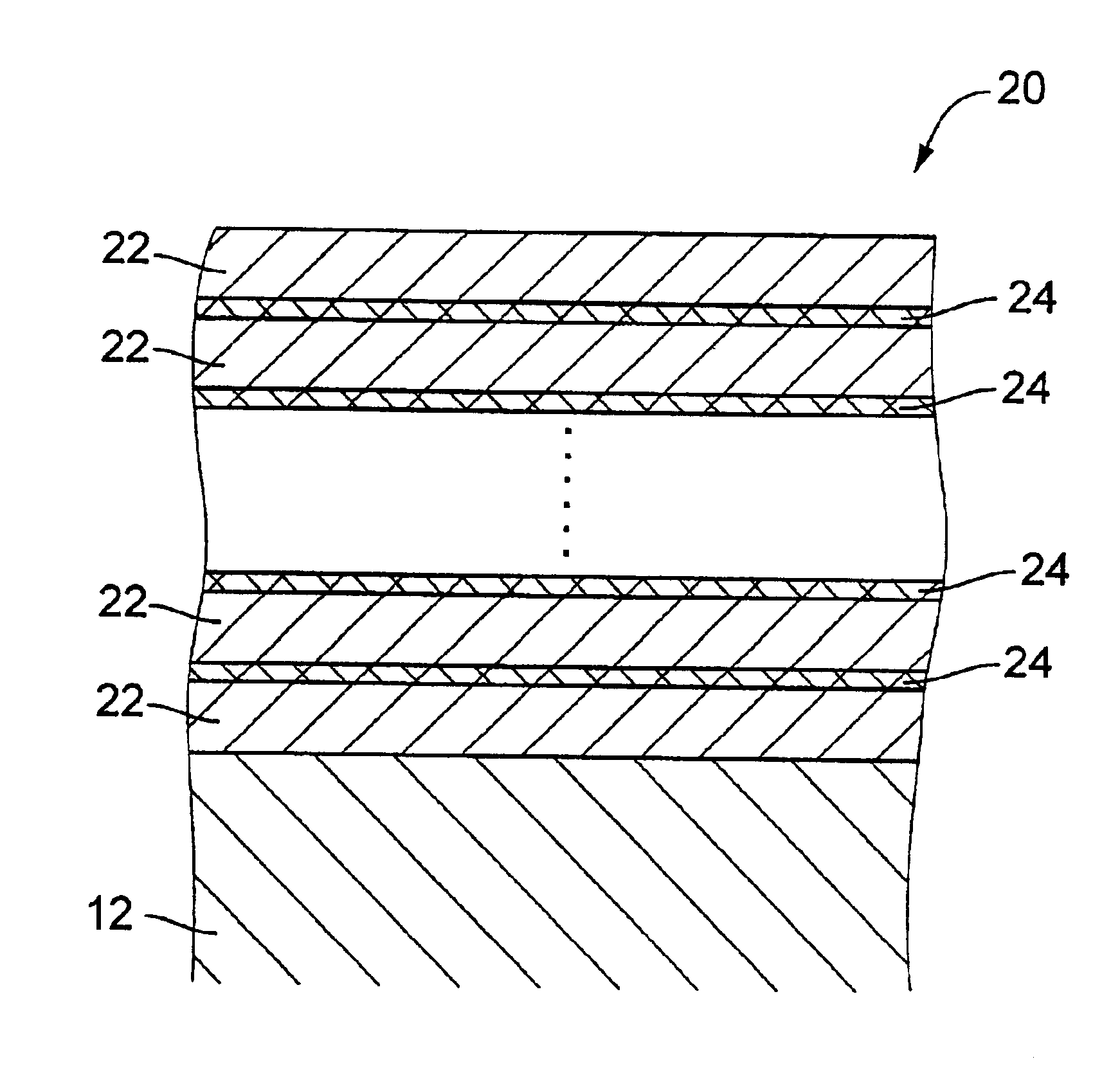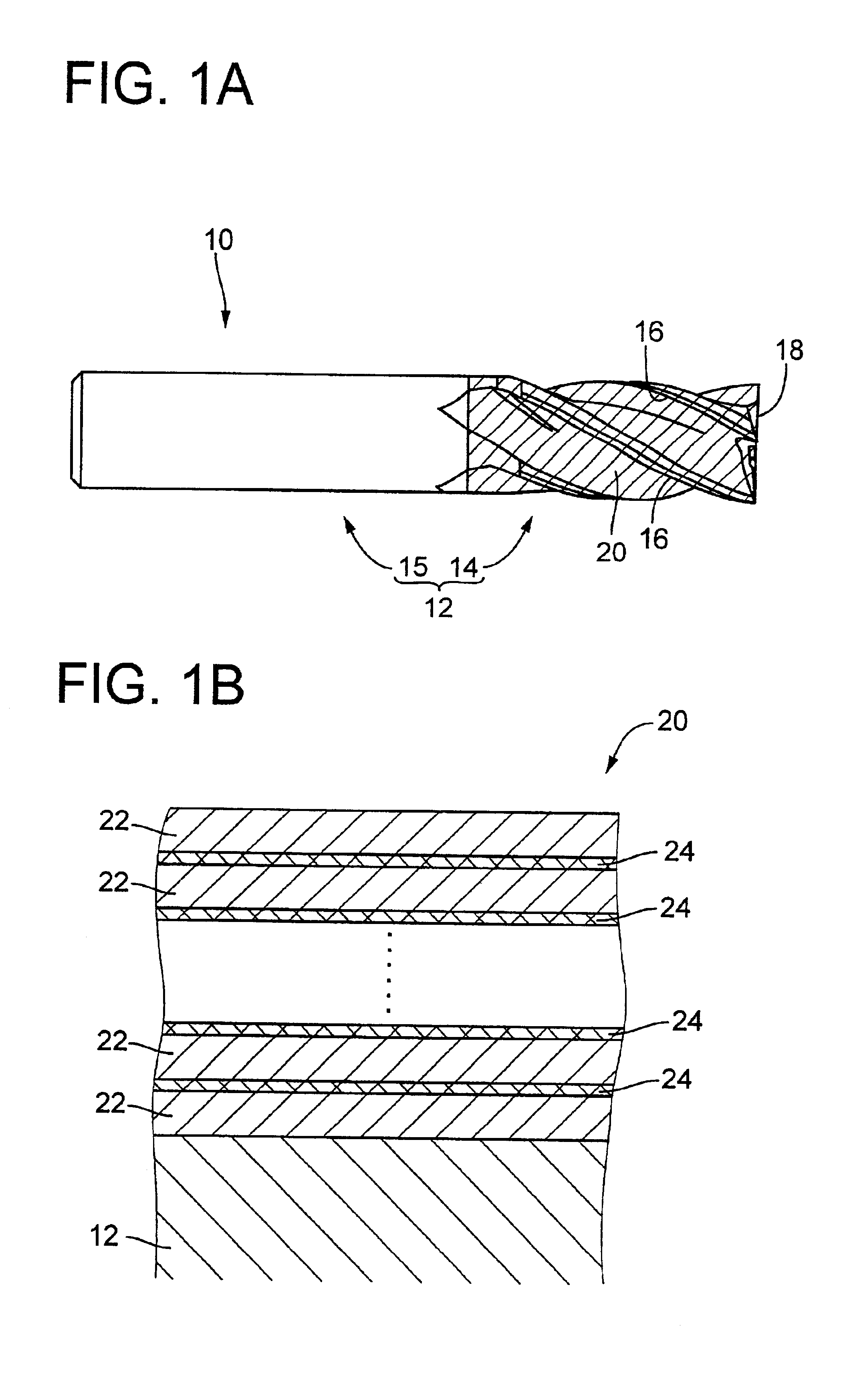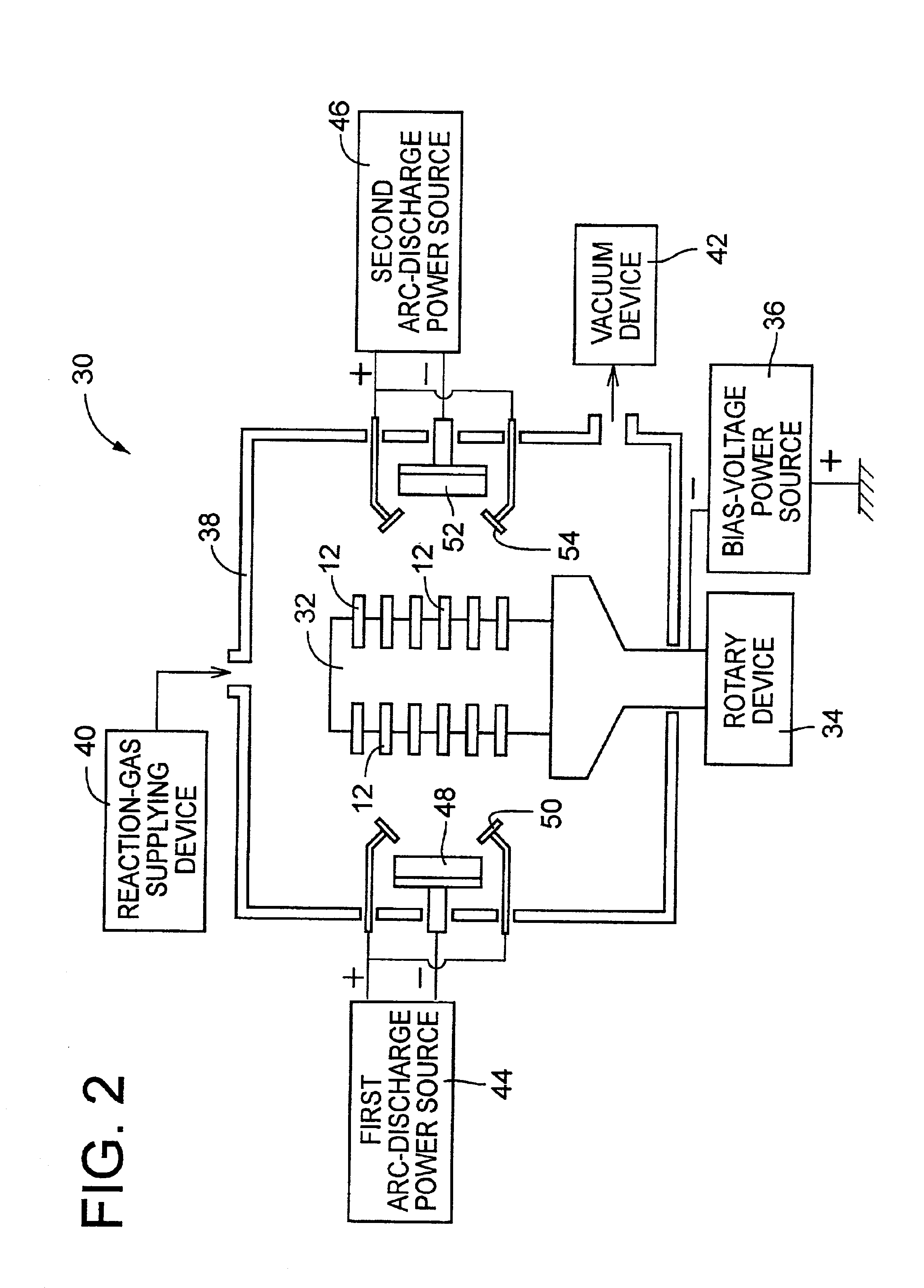Hard multilayer coating, hard multilayer coated tool including the hard multilayer coating, and method of forming the hard multilayer coating
a multi-layer coating and hard coating technology, applied in the field of hard multi-layer coating, can solve the problems of insufficiently preventing chipping and separation, insufficiently showing excellent wear resistance of tialn, etc., and achieve excellent adhesiveness or bonding strength, excellent wear resistance, and high hardness.
- Summary
- Abstract
- Description
- Claims
- Application Information
AI Technical Summary
Benefits of technology
Problems solved by technology
Method used
Image
Examples
Embodiment Construction
[0042]FIG. 1A is an elevational view of a hard multilayer coated tool in the form of an end mill 10 which is constructed according to an embodiment of the invention. The end mill 10 includes a tool substrate (base material) 12 having a generally cylindrical shape and formed of a cemented carbide. The tool substrate 12 has a cutting teeth portion 14 and a shank portion 15 which are formed integrally with each other. The cutting teeth portion 14, in which helical flutes and cutting teeth are formed, has a surface that is coated with a hard multilayer coating 20. In FIG. 1A, the oblique-lined portion represents a portion of the surface on which the hard multilayer coating 20 is coated. Each of the cutting teeth has a peripheral flank face, a bottom or end flank face and a rake face which is provided by the corresponding one of the helical flutes, so that a peripheral cutting edge 16 and a bottom or end cutting edge 18 are formed in each cutting tooth. The peripheral cutting edge 16 is ...
PUM
| Property | Measurement | Unit |
|---|---|---|
| total thickness | aaaaa | aaaaa |
| total thickness | aaaaa | aaaaa |
| total thickness | aaaaa | aaaaa |
Abstract
Description
Claims
Application Information
 Login to View More
Login to View More - R&D
- Intellectual Property
- Life Sciences
- Materials
- Tech Scout
- Unparalleled Data Quality
- Higher Quality Content
- 60% Fewer Hallucinations
Browse by: Latest US Patents, China's latest patents, Technical Efficacy Thesaurus, Application Domain, Technology Topic, Popular Technical Reports.
© 2025 PatSnap. All rights reserved.Legal|Privacy policy|Modern Slavery Act Transparency Statement|Sitemap|About US| Contact US: help@patsnap.com



